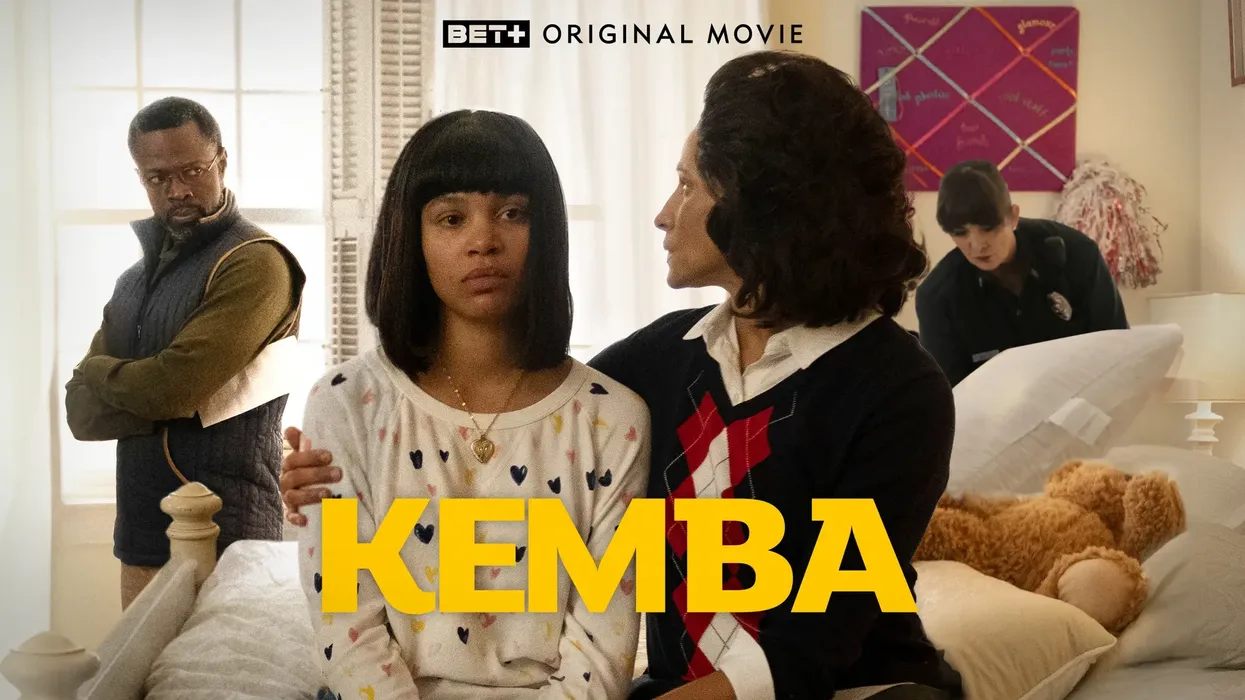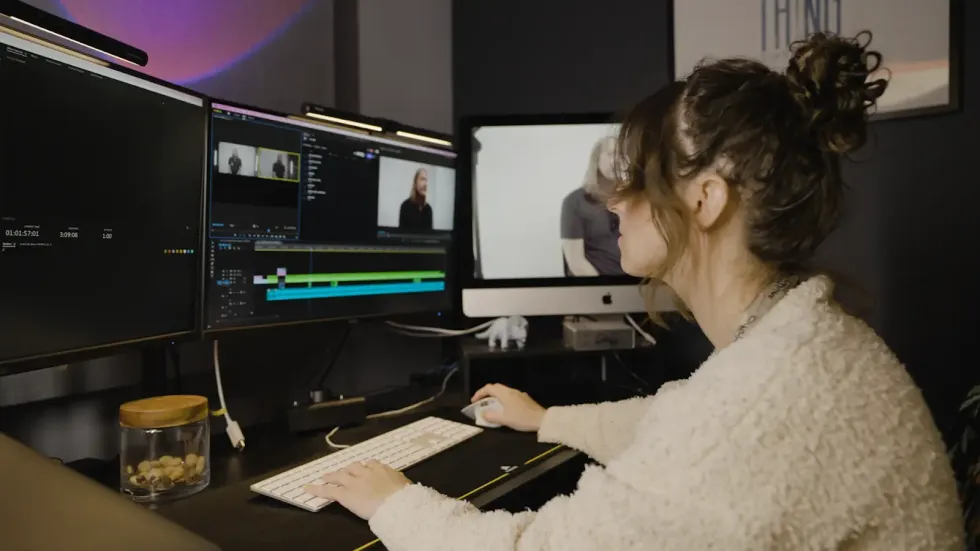Sharing the true story behind “Kemba” with Moonshine Post’s Kristina Kromer
Based on the true story of Kemba Smith, “Kemba” follows the journey of a sheltered college student who falls in love with a man, only to find out he isn’t who he seems.

This post was written by Michelle Gallina and originally appeared on the Adobe blog on March 22nd, 2024.
When Kemba learns of her boyfriend Khalif’s true identity as a drug kingpin, he turns abusive — leading her down a dangerous path. Though she never dealt or handled drugs, in a tragic turn of events, Kemba receives an outrageous sentence for her boyfriend’s crimes — placing her in the middle of the government’s “war on drugs.” Never losing hope, her parents, Gus and Odessa Smith, along with an attorney with the NAACP Legal Defense Fund launch a campaign for appeal and later clemency, harnessing the power of black civic organizations, sororities, celebrities, and lawmakers to help free Kemba.
We heard from Moonshine Post’s Kristina Kromer, who edited “Kemba” using Adobe Premiere Pro and Frame.io.
How and where did you first learn to edit?
I became interested in editing, in a super basic, fundamental sense, at a very young age. When we were maybe 10 or 11, my friend and I would run around the neighborhood with a Digital Blue Camera shooting silly fake commercials (think “The Amanda Show: Meatloaf Crunch”) and then throw them together on her family’s PC. Of course, I didn’t fully realize what editing was as a concept until much later, but if we’re being historically accurate here, that’s how it started for me. I’ve been using Adobe tools since college and have cut in Premiere Pro for nearly every major show I’ve been a part of since.
How do you begin a project/set up your workspace?
I have a project template that I, and another editor I often work with, have been sort of developing over the years. We make little tweaks to it every once in a while, but for the most part, it’s just the way we both like to keep things organized, and it works. When a new project starts, it’s a simple copy, paste and rename the project to whatever the show name is in Productions in Premiere Pro.
The biggest change we made was when we started using Premiere Pro Productions, but we basically made it look similar to how we would set up standalone projects. Now we have everything in one place in Productions and split up into our own projects. So current sequences have their own project, the footage has its own project, music and graphics have their own projects and so on. This is particularly beneficial in the event that you end up with some corrupted media. Instead of a bad file screwing up the entire project, it’s sort of quarantined to its own project and can be easily dealt with.

Image Source: MPI Original Films / BET+.
Tell us about a favorite scene or moment from this project and why it stands out to you.
There are so many scenes that I just love in the movie, but one of my favorites is towards the end, when time starts running out for Kemba to be granted clemency, and her parents are at this long table with Elaine and the whole legal team. It just came together so naturally and had the energy that I initially felt when reading the script — it was just so good. I don’t think it has really even changed since the first cut. It was just a crowd favorite, “no notes, now we’re cookin’ kinda scene.”
What were some specific post-production challenges you faced that were unique to your project? How did you go about solving them?
I specifically requested that we cut “Kemba” in Premiere Pro because every experience I’ve had in it has been flawless, and I wanted to make sure this edit went on without a hitch. The turnaround time for features and television seems to be shrinking every year, so stability and reliability are more crucial than ever.
On top of that, the first cut-to-script assembly of this movie was rather lengthy, and when possible, I prefer to work in one timeline rather than in reels. There are benefits to both, but I find that in movies with flashbacks and repeated stylized elements, it’s much easier to scrub back through a singular timeline and pick them out. Not once did I experience any lag or crashes in this project, meaning I was free to cut and be creative rather than fight with the software. We only get so much time to make a film as good as it can be, and using Premiere Pro allowed me to make the most of that time.

Image Source: MPI Original Films / BET+.
What Adobe tools did you use on this project and why did you originally choose them?
I’ve been using Productions in Premiere Pro since it launched, and I adore it. It was the one major collaborative feature that I had sort of been patiently awaiting! Most of the projects I work on are with other people on a team and being able to work in the same project simultaneously is a major contributing factor to a smooth workflow.
I also use Enhance Speech and other tools in the Essential Sound Panel on everything I work on. When I present my first cut to a director or a client, I want it to look and sound as polished as possible. I don’t want anyone getting distracted by a flaw in production sound when we’re trying to see the movie as a whole, especially on a movie like “Kemba”, which is serious, dramatic, and at times somber and quiet. In those nearly silent stretches, a scratchy lav or noisy background can take you out of a moment in an instant. The sound tools in Premiere Pro save us from that, often with a single push of a button, which is incredible. Additionally, I didn’t use Text-Based Editing on this project, but have since used it, and it’s been a game changer!
We used Frame.io both for viewing dailies during production and then for our review process later on. I’ve used plenty of other video review platforms over the years, and I’ve had the best experience with Frame.io. It’s user-friendly, which is important when you’re sharing a cut with lots of different people who are maybe used to different ways of reviewing. There’s no compiling notes across different docs and email threads — everyone can add notes directly on the review link and respond to one another right there. My computer was air-gapped for this project for security purposes, so I didn’t get to take advantage of the Frame.io integration within Premiere Pro (though I’ve used it before and it’s amazing), but being able to download the comments from Frame.io and import them into my project as markers saved us all a lot of headache on this project.
What’s the toughest thing you’ve had to face in your career and how did you overcome it? What advice do you have for aspiring filmmakers or content creators?
The toughest thing I’ve had to overcome is my own self doubt. I think everyone experiences imposter syndrome for some stretch of their career. I thought for a while it was just me, but over time, I learned it was everyone — even the other more senior editors I worked with that I looked up to and who seemed so confident. Frankly, I don’t know if the imposter syndrome ever fully goes away, but my advice would be to listen to your own instincts as well as listen to praise. Knowing your own abilities is important because you don’t want to oversell yourself for a job that you maybe aren’t quite ready for yet, but also don’t let that fear hold you back from taking steps up the ladder. There’s a balance there that’s hard to learn when you first start out, but just being aware of the challenge and knowing we all deal with it will make it easier to face.

Image Source: MPI Original Films / BET+.
This post was written by Michelle Gallina and originally appeared on the Adobe blog on March 22nd, 2024.











